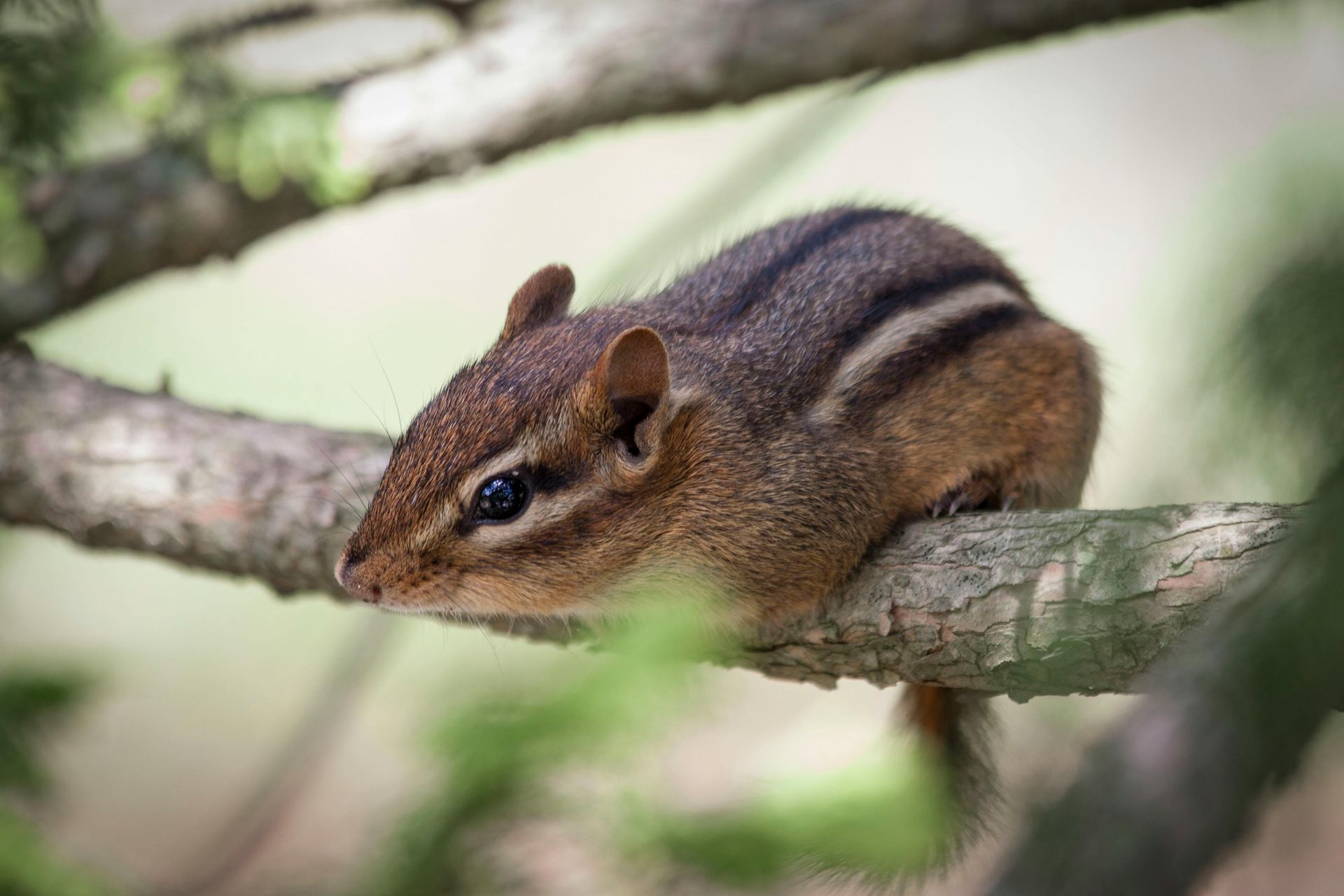Chipmunks are small, striped rodents known for their agility. Found across North America, they thrive in a variety of habitats, including forests, grasslands, and suburban backyards. These energetic creatures play a critical role in forest ecosystems by dispersing seeds and fungi, which helps promote plant growth.
Most chipmunks are about 5-6 inches long, with an additional 3-4 inches for their tails. They have brownish-red fur with distinctive black and white stripes running down their backs. Their large, expressive eyes and quick movements make them easy to spot as they scurry around collecting food.
Chipmunks are primarily herbivorous, feeding on seeds, nuts, fruits, and fungi, though they occasionally consume insects and small vertebrates. They are known for their cheek pouches, which they use to carry food back to their burrows. These burrows, often complex and multi-chambered, serve as storage for food and a safe place to sleep and rear young.
Breeding occurs twice a year—in spring and late summer. Females give birth to litters of 4-5 young, which stay with their mothers for a few months before becoming independent. Chipmunks are solitary except during the breeding season and are highly territorial around their burrows.
Natural predators include hawks, snakes, foxes, and domestic cats. Despite facing threats from habitat loss and human activity, chipmunks have adapted well to suburban environments.

For your safety and the well-being of wildlife, please observe animals from a distance and avoid touching or disturbing them. If you encounter an animal that appears injured or in distress, contact a licensed wildlife rescue organization for guidance before intervening.
Found An Animal? Not sure how to help a wild animal in need? Learn when to step in, who to call, and how to help safely.
Did You Know?
- Chipmunks can store up to five times their body weight in food in their burrows for winter survival.
- Their cheek pouches expand significantly, allowing them to carry large amounts of food at once.
- Chipmunks are excellent climbers, despite spending most of their time on the ground.
- They play a key role in forest regeneration by dispersing seeds and spores of fungi.
- Chipmunks enter torpor during winter, reducing activity but not fully hibernating like some other rodents.
- Their alarm calls are highly sophisticated, varying based on the type of predator.
- Each chipmunk has a unique burrow system, with separate chambers for sleeping, food storage, and waste.
- They can live up to three years in the wild, though many fall prey to predators.
- Chipmunks are highly territorial, often engaging in vocal and physical displays to defend their burrows.
Problems Faced In The Wild
- Habitat Loss: Urban expansion reduces available natural areas for nesting and foraging.
- Predation: Increased presence of domestic cats and other predators can decimate local populations.
- Vehicle Collisions: Chipmunks are at risk from roads cutting through their habitats.
- Food Competition: Invasive species may outcompete chipmunks for resources.
- Climate Change: Altered weather patterns can impact food availability and burrow conditions.
- Human-Wildlife Conflict: Chipmunks are sometimes considered pests in gardens and homes.
Tips For Cohabitation
- Provide Natural Cover: Preserve rock piles, logs, and shrubs to offer chipmunks safe shelter.
- Avoid Using Rodenticides: Opt for humane pest control methods that won’t harm chipmunks or other wildlife.
- Plant Native Vegetation: Supporting local plant species helps maintain their natural food sources.
- Install Fencing: Use protective barriers around gardens to prevent chipmunks from foraging on crops.
- Drive Cautiously: Watch for chipmunks crossing roads in wooded or suburban areas.
- Educate Neighbors: Promote awareness of the ecological benefits of chipmunks and how to coexist peacefully.



